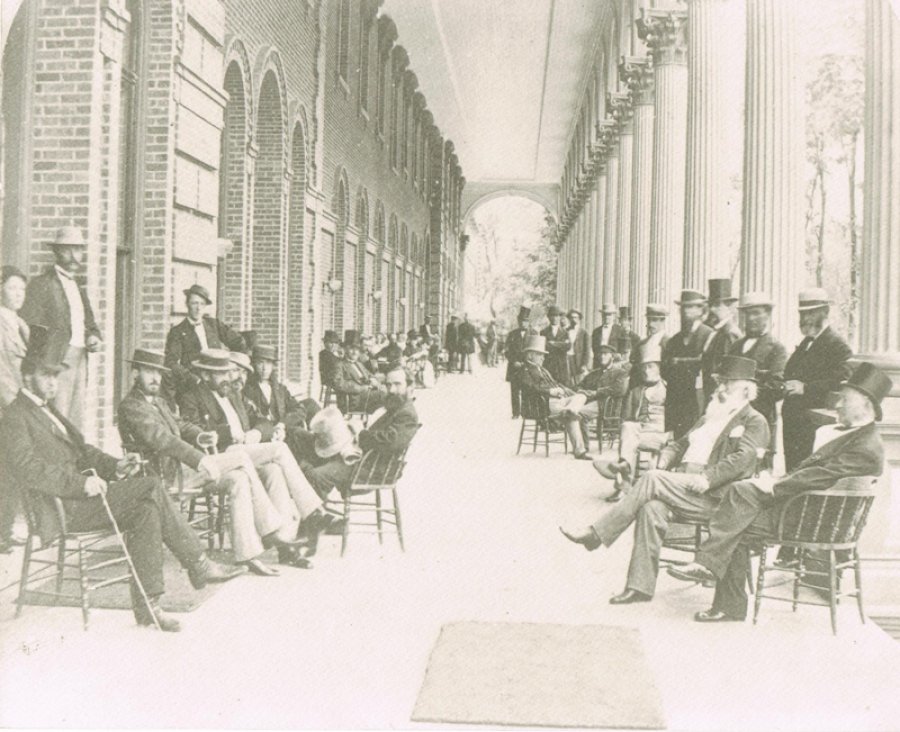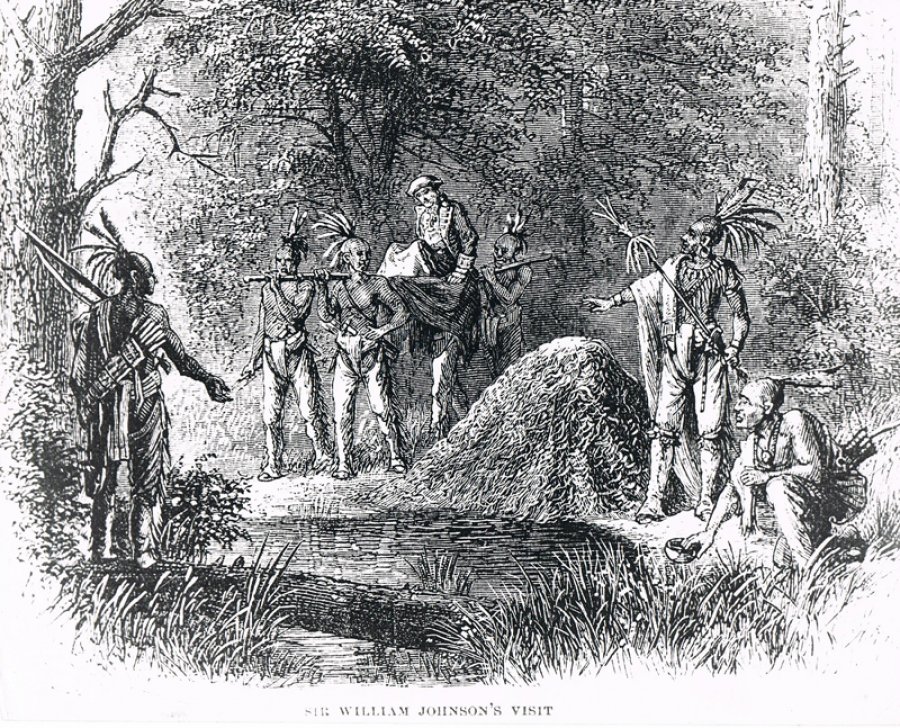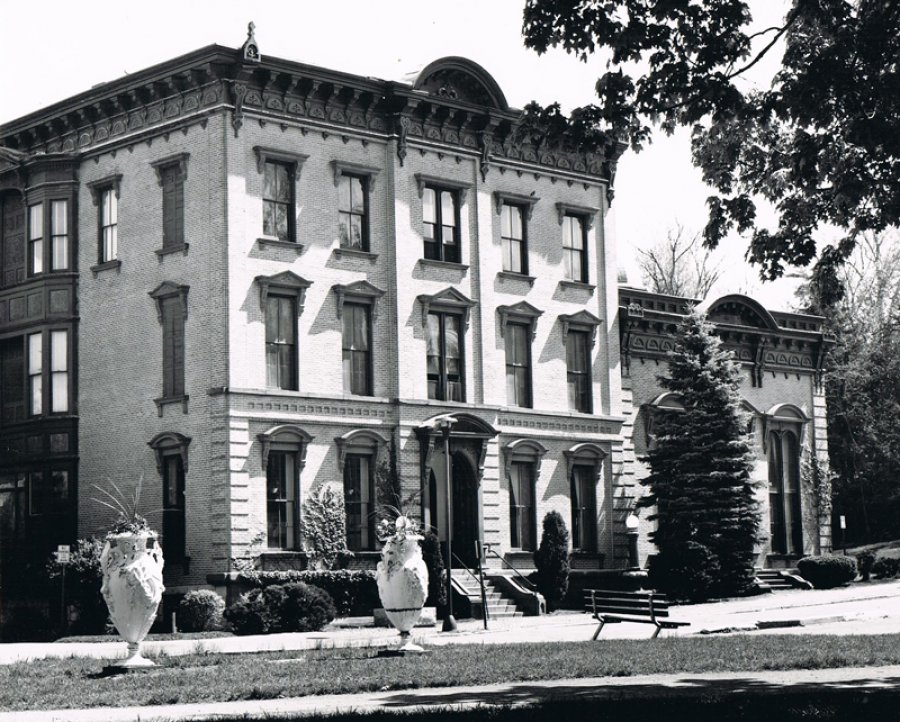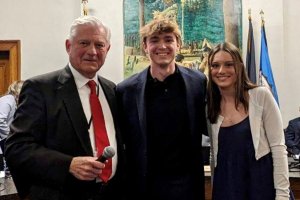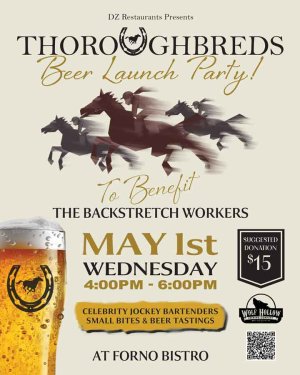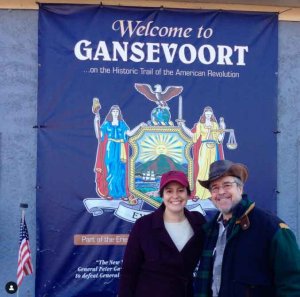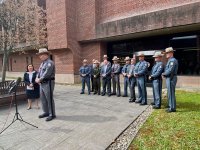Displaying items by tag: history of saratoga
History of Saratoga - Famous Visitors to Saratoga
Interesting stories of famous visitors coming to Saratoga Springs are numerous and the list of notable individuals is long. These visitors truly helped Saratoga to become the number one summer tourist destination in the United States during most of the 1800’s.
I think each of us have a different view as to what makes a person a notable individual. Some would pick stars of the stage, others would be impressed with politicians, or writers, titans of industry, lawyers, famous orators or American Presidents. In this case there is no problem with which group to pick, since we had them all visit Saratoga Springs.
Starting with future President George Washington visiting the High Rock Spring in 1783 with General Phillip Schuyler we continued with visits from other Presidents like Buchanan, Grant, Fillmore, Tyler, Jackson, Arthur, Cleveland, Van Buren, Harrison, Pierce, J.Q. Adams, Garfield, Hayes and Roosevelt. They came for political reasons as well as for the high society of the day. Saratoga was a place to see and be seen.
We also entertained international guests like Napoleon the third, brother of Napoleon Bonaparte and former ruler of Spain and Naples for five summers in the 1820’s. Napoleon III spent his time on the property that today is known as Yaddo. In the 1820’s the property was owned by Jacobus Barhyte who operated a tavern and boarding house that featured renowned trout dinners with fish from the ponds on the property. Napoleon III loved the land so much he offered to buy the property for a large sum but was refused by Barhyte. The famous French hero of the American Revolution, the Marquis de Lafayette, was on a world tour in 1824 and made an extended stop in Saratoga that summer. We must have been a great summer destination if international guests like Napoleon and Lafayette made time to visit our city.
Many notable American politicians also came to our city for the purpose of attending the many political conventions that were held in the city or to give speeches when running for office. Henry Clay, John Calhoun, Daniel Webster and Aaron Burr all visited Saratoga.
The former Vice-President Aaron Burr had other connections to Saratoga beside just a casual summer visit. Burr in his later years was single and in need of funds since he was a poor manager of his finances. In 1832 he met Eliza Jumel who had great assets, having done a tremendous job of running her husband, Stephen Jumels’ wine importing business after his early death. The former Mrs. Jumel was a well-known figure in the social circles of Saratoga during the summer season. Eliza resided at her summer home on Circular Street, when not in her NYC home.
Eliza Jumel wanted the respect that marriage to a former Vice-President would give her and Burr was looking for financial stability, so they were married in 1833. A short time after their marriage, Burr had lost thousands of dollars of their money with poor investments. Eliza had made it clear that the practice needed to cease. After continued losses by Burr, Eliza decided to divorce him. In search of protection in the divorce proceedings she decided to retain a lawyer that would work to protect her assets. She looked for someone who would have a real desire to help her, so Eliza retained the legal services of Alexander Hamilton’s second son, Alexander Hamilton Jr. Since Burr killed Hamilton Sr. in a duel, she felt the choice was a good one. Later she served the elderly Burr with the divorce papers and the divorce was finalized in 1836, on the day Burr died.
The parade of famous visitors continued with the notable writers James Fenimore Cooper, Mark Twain, Harriet Beecher Stowe, Ralph Waldorf Emerson, Horace Greeley, and Washington Irving. Washington Irving was best man for the marriage of Saratoga’s, Mansfield Walworth to Ellen Hardin Walworth on July 29, 1852 at St. Peter’s Church in Saratoga Springs. Other people associated with the arts continued with musical composers John Phillip Sousa and Victor Herbert. Both served as conductors and music directors at large Saratoga hotels in the summer.
Victor Herbert was music director at the famed Grand Union Hotel for a few summers in the early 1900’s. His 60-piece orchestra provided musical entertainment to hotel guests by playing as many as three concerts a day. Herbert became good friends with Tom Winn who was head of hotel security. Every night after the evening concert Herbert chose to unwind by taking a walk around the courtyard of the grand hotel with Winn. On one warm summer night as they walked, they heard a muffled voice from the bushes say; “Kiss me” and a few seconds later the same voice said, “Kiss me again”. Both Herbert and Winn smiled at each other and walked away. Victor Herbert used this as inspiration to compose music for a song entitled “Kiss Me Again”. Henry Blossom wrote the lyrics and it became the cornerstone for the operetta entitled: “Mademoiselle Modeste”. The opera opened on Broadway December 25, 1905. Prior to the opening of the production Herbert sent Winn two front row tickets to the opening with a note that read; “You were at the conception, come see the birth”. Such was summer life in Saratoga Springs.
The list of famous guests also includes Civil War Generals Winfield Scott, William Tecumseh Sherman and Ulysses S. Grant. Even future Confederate General Stonewall Jackson stayed in Saratoga Springs on his honeymoon. Industrial giants W.C. Whitney and Commodore Vanderbilt were regulars to the city along with founders of the Saratoga Racetrack William Travers, Leonard Jerome and John Hunter who worked with John Morrissey to start racing horses in 1863.
This trend of famous visitors continues today with many notable people visiting SPAC, the Racetrack or just the city. We are very lucky to live in a city that we love so much and is appreciated by so many that visit even in the 21st century.
History of Saratoga - Lillian Russell & Diamond Jim Brady
The romance and glamour of Saratoga Springs in the summer season during the 1800’s is told in many stories. One of the most renowned stories of a man and woman in this time period is that of the relationship between millionaire Diamond Jim Brady and theater starlet, Lillian Russell. Many would call this a love story, but was it?
In a time period without motion pictures and television the heart throbs of the country were developed on the theater stage. Lillian Russell rose to prominence quickly as a beautiful young actress with the foremost singing voice of the day.
Lillian was born Louise Leonard in Clinton Iowa in 1860 and lived her early years in Chicago. At age 18 she moved to NYC with her mother after her parents divorced. She studied music and dance and at age 19 she was hired by producer Tony Pastor to perform in the comic opera H.M.S. Pinafore. She was an overnight success and soon began a tour of Europe and the United States, performing other operas with his troupe.
James Brady was born in NYC on August 12, 1856 and began his work experience in hotels but soon went to work for the N.Y. Central Railroad. At the age of 21 Brady had risen to the position of Chief Assistant to the General Manager of the N.Y. Central. At age 23, Brady took his knowledge of railroads to work for the rail equipment company, Manning, Maxwell and Moore as a salesman. He had tremendous success in sales and became a millionaire with the nick name “Diamond Jim” because of his many pieces of jewelry composed of diamonds and other jewels. Jim earned millions as a salesman and made sure people saw his wealth. At the time of his death he had over 20,000 diamonds and 6,000 other precious jewels. His favorite ring contained a 25.5 carat diamond.
Jim was a regular theater goer and quickly became fascinated with the young Lillian Russell. Every opening night Lillian received from him a large bouquet of flowers usually with a piece of jewelry placed in the arrangement with a note from her biggest admirer. This friendly relationship went on for over 20 years both in and out of the theater. Lillian and Jim were seen often together at social events or in restaurants. As you might imagine the rumor mills went to work and the common gossip of the day was that the two must be in a torrid romantic relationship since they were seen together so much. The truth was that Jim was never married while Lillian had married four times and always remained friends with Brady. That continued friendship fueled the daily gossip on the front porches of the grand hotels that there must be a romantic connection.
Lillian and Jim both came to the city numerous summers and enjoyed the social life of the day. Lillian was seen daily walking Broadway or riding in her beautiful Victoria carriage drawn by a pair of matched black hoses with white doeskin harnesses. Once Richard Canfield opened his famed restaurant in the Casino, Lillian dined there nightly enjoying her favorites of sweet corn and crepes suzette always prepared table side by the famous chef Jean Columbin.
Lillian introduced Diamond Jim to the new craze of bicycle riding. Diamond Jim never did anything half way and ordered twelve bicycles to be delivered to him for use. One of the bicycles was modified to have silver plated spokes and a gold-plated frame with diamonds and emeralds mounted on the handle bar and frame area. This gift from Jim to Lillian cost $1,900 at that time.
Lillian drew attention every summer at Saratoga, and as a regular at the racetrack she was always surrounded by admirers. As she aged, her position as the most beautiful performer in the country was being challenged by younger performers. Louise Montague was one of those young challengers. One summer Louise appeared at the racetrack and sat relatively close to Lillian each day. Both attracted attention and as they bet on the horses in each race, a friendly rivalry developed to see who would pick the most winners during the season. The onlookers kept track of the number of wins for each woman and daily discussions of which woman would ultimately win followed. Louise was once asked about Lillian’s skill at predicting winners and Louise was heard to say that “she thought that Lillian closed her eyes and stuck the program with a hat pin to pick the winner”. This statement caused the rivalry to heat up. When the last day of racing began both women were tied with number of wins. At the end of the last race, Lillian was pronounced the ultimate winner. Lillian threw a large party that night and invited Louise to attend along with many other socialites. When Louise arrived, she brought her host a gift in the traditional pale blue color of the Tiffany Company. When Lillian opened it, she found a beautiful three prong silver plated fish fork. When Lillian thanked Louise, Louise told her “Now you can use the fork to pick win, place and show everyday next year”.
At the end of the 1890’s Lillian was between marriages and in a relationship with Jesse Lewisohn and Jim was in a long-term relationship with a woman named Edna McCauley. After years of the four being together Jesse fell in love with Edna and they married, leaving Jim and Lillian to console each other. At that point Jim proposed marriage to Lillian in her NYC home and she refused saying” We make better friends than husband and wife”. They remained friends until Jim’s death at age 60. Lillian lived on and passed away at the age of 61 in 1922.
The story of Lillian Russell and Diamond Jim Brady has many more chapters, but I feel they only paint a picture of long-time friendship and not the torrid romance that most people of the time wanted. Their true love affair at the spa was not with each other but with the city of Saratoga Springs.
History of Saratoga - High Rock Spring
Most new residents and visitors to the city probably better know the location of the High Rock Spring as the area near the Farmers’ Market, or the area near the 9/11 Memorial “Tempered by Memory” on High Rock Avenue in Saratoga Springs. In the 1800’s the area was all about the popular High Rock Spring and history has shown that it was the founding location of the city.
The Mohawk were the indigenous tribe of Native Americans for hundreds of years in the area of today’s Saratoga Springs. They spent summers fishing. hunting and growing crops to provide a food supply to get their tribe through the harsh winters of upstate New York. While in the area they discovered the natural mineral springs, used them extensively and guarded their location.
Sir William Johnson is thought to be the first European to visit the High Rock spring in 1771, when in poor health, was brought to the spring for a four-day visit. Johnson was the Superintendent for Indian Affairs in North America for the British Crown. Sir William lived among the Mohawk and had even married the chief’s sister, Molly Brant. Because of this strong bond with the tribe, when Johnson showed signs of declining health the Mohawk carried him on a litter to reveal the location of their deeply guarded secret spring at High Rock. After a brief four-day stay he found bathing and drinking the water made for a positive change in his health, as he was able to walk most of the way back to his home in the Mohawk Valley. After his visit, Sir William sent letters to many friends describing the healing effects of the waters and soon settlers demanded access to this guarded location. Soon a deal was brokered with the Mohawk and the area was opened for settlement by Europeans.
After a few early short-term settlers, Alexander Bryan became the village’s first permanent settler when he began operating a tavern and boarding house in the High Rock area near what today is the Olde Bryan Inn. The area around the High Rock and Alexander Bryan’s Tavern saw the construction of the first cluster of structures built in the early village and was known as the Upper Village. Soon another area began to develop a short distant to the south in the area near the present-day Congress Spring. In 1802 Gideon Putnam and his wife Doanda, constructed and operated the first hotel in the village on the northwest corner of Broadway and Congress Street. This new area became known as the Lower Village. Soon Saratoga Springs began to grow, and the two villages grew into one Saratoga Springs.
As Saratoga Springs flourished in the 1800’s the number of mineral springs grew from four that were original and naturally occurring, to 203 mostly drilled springs. By 1908, overuse of most of the many springs by mechanical pumping left the High Rock Spring dry. The High Rock Spring had stopped flowing and the founding spot of the village would stay dry until it was re-drilled in 2015.
In celebration of the centennial of the village becoming a city in 1915, a committee worked to re-drill and bring back to life the very important High Rock Spring. Two big players helped to complete the project. First was the very talented well drillers of Hawk Drilling who donated many hours of labor and materials to reach water at 442 feet below the surface. Then the talents of the Saratoga Springs Department of Public Works under the direction of Commissioner Skip Scirocco provided the site work and plumbing for the new fountain. This allowed the water to exit the ground in two spots, the fountain and the original mineral “cone” that had provided water for use for hundreds of years.
This summer, plan to visit the High Rock Spring to further learn about the early history of Saratoga Springs as well as to enjoy the water from that spring and nearby springs Peerless and Governor. Our city slogan has it right when it states; “Health, History and Horses.” It all began with Health and the mineral springs, especially the High Rock.
History of Saratoga - Canfield Casino
In the year 2019, the silhouette of the many grand hotels and some of the Victorian architecture that was the trademark of the city in the 1800’s is missing. We are fortunate to still have a wonderful example of the architectural style offered in those magical years in the form of the Canfield Casino, located in Congress Park.
What is known today as the Canfield Casino opened in the summer of 1870 at a construction cost of $190,000, known originally as the “Saratoga Clubhouse” under the management of John Morrissey. It was always Morrissey’s intent to use the beautiful venue as a gambling casino, but since gambling was illegal in the city at the time, Morrissey presented the space as a men’s club. In order to ensure that the wealthy would be impressed with the building, Morrissey used the top interior designers of the time, the Herter Brothers of NYC and Mitchell Vance was asked to do the lighting. In 1870 as the top design company, the Herter Brothers also did the White House and many of the homes of the wealthy in America. Today the Canfield Casino is one of only three remaining commercial structures in the country designed by the Herter Brothers.
Admission to the building was to members who paid a seasonal membership fee of $200 per person. Gambling was always limited to men that were non-residents of Saratoga Springs. In that era women of high social status generally did not wish to be seen in gambling spaces, and the exclusion of locals prevented anyone from losing money that might return to protest the operation. A truce was made with local religious leaders by suspending gambling on Sundays. Morrissey also returned money to the community at the end of each summer season by donating some of his profits to churches and non-profits in the city.
At the conclusion of the first summer the experiment proved to be a monetary success as well as a hit with locals, so plans were made to build additional gaming space in the form of a parlor that would be available for the summer of 1871. In May of 1878 John Morrissey died of illness on the second floor of the Adelphi Hotel, and partners Reid and Spencer operated the venue until it was purchased by New York City gambler Richard Canfield in 1894 for $250,000. Canfield raised the elegance of the building by adding the ballroom, which operated as a restaurant, and the Italian Gardens in the park for about $800,000.
Anti-gambling sentiments both locally and nationally started to pressure the closure of the Canfield Casino in the early 1900’s. Under intense pressure Richard Canfield finally put the Casino up for sale. Finally, with no purchase offers, the City of Saratoga Springs bought the building and surrounding land in the park for a bargain price of $150,000 in 1911. This iconic building is still owned by the city today and is continually updated and repaired by the Saratoga Springs Department of Public Works with great care and understanding of its importance in the history of the city.
In the summer of 2020, the Canfield Casino will be celebrating its 150th anniversary of being a notable location and jewel of the city. Today, daily tours of the building are offered by the staff of the Saratoga Springs History Museum that provide additional facts on the structure as well as a glimpse into the famed history of Saratoga. In 2010 another twist was added when the Canfield Casino was investigated by the TV show “Ghost Hunters” to explain frequent observed paranormal activity. Since that time, ghost tours have been offered on Monday, Wednesday and Friday during the summer at 11 a.m.
As you plan your summer activities, put a stop at the Canfield Casino on your list to enjoy the true feel of Saratoga Springs history.




 How to resolve AdBlock issue?
How to resolve AdBlock issue? 